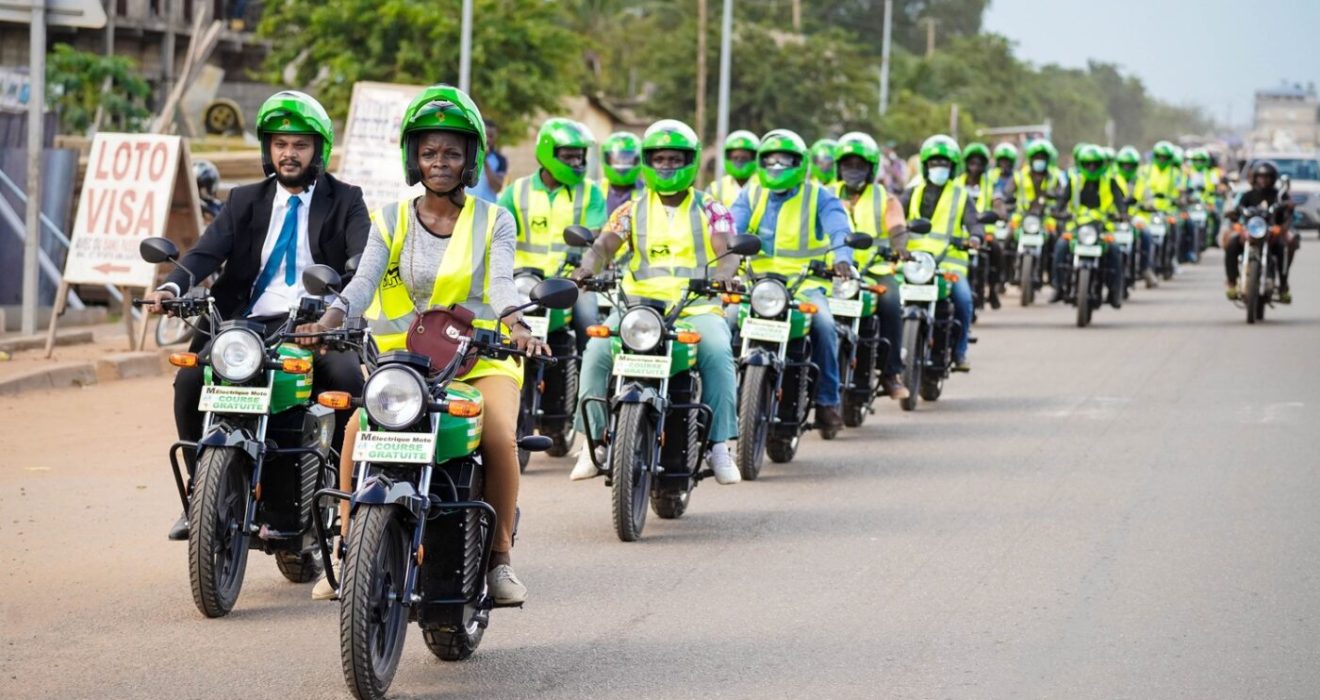In the vibrant streets of Lomé, the capital of Togo, a remarkable transformation is unfolding among motorcycle taxi drivers who are embracing the transition to electric motorcycles. This paradigm shift is driven by recognition of the numerous advantages associated with electric vehicles, ranging from cost efficiency and enhanced safety to reduced environmental pollution and improved health outcomes. As drivers in Togo experience these benefits firsthand, a palpable enthusiasm for electric motorcycles is taking root.
Despite the evident advantages, the broader adoption of electric motorcycles in Africa is progressing at a gradual pace. Presently, less than 1 percent of the estimated 27 million two- and three-wheelers on the continent have transitioned to electric power. This discrepancy underscores the challenges and barriers hindering the widespread adoption of eco-friendly transportation solutions in the region. As we delve into the intricate dynamics of this transformative shift, it becomes evident that unlocking the full potential of electric mobility in Africa requires concerted efforts and strategic interventions.
The Slow Transition and Market Overview
The vast majority of motorcycles in Africa still rely on internal combustion engines and fossil fuels, contributing to air pollution and climate change. The market, valued at US$4.8 billion annually, remains largely untapped for electric vehicles. The United Nations Environment Programme (UNEP) and the Global Environment Facility (GEF) are collaborating with 41 countries, including Togo, through the Global E-mobility Programme to accelerate the adoption of electric mobility.
Togo’s E-mobility Policy
Togo is taking proactive steps to align with its Paris Agreement goals by developing a national e-mobility policy. This policy aims to establish regulatory and fiscal mechanisms to make electric vehicles mainstream. Mery Yaou, Director of the Environment at Togo’s Ministry of Environment and Forest Resources, envisions Togo becoming a regional leader in e-mobility, with nearly 3,000 e-motorcycles already on its roads.
Environmental Impact and Emission Reduction
Shifting two- and three-wheelers to electric power has the potential to significantly reduce carbon dioxide emissions, estimated at 500 to 600 tonnes annually. However, despite the environmental benefits, only around 20,000 electric motorcycles have been deployed across the continent, constituting less than 0.5 percent of the entire motorcycle fleet. The slow adoption is attributed to various factors.
Financing and Infrastructure
Since the 1990s, the popularity of two- and three-wheelers in Africa has surged due to the inadequacy of public transport services. Financing hurdles for electric motorcycle importers, limited charging infrastructure, and the absence of clear national strategies for low-carbon electric mobility have impeded the widespread adoption of electric vehicles.
The Role of Electric Mobility in Emission Cuts
The urgent need to cut greenhouse gas emissions by over 40 percent by 2030 to meet climate targets necessitates a global shift to zero-emissions electric mobility. Fossil fuels are responsible for nearly 90 percent of carbon dioxide emissions. Sheila Aggarwal-Khan, UNEP Director of the Industry and Economy Division, emphasizes the importance of including low- and middle-income countries in this shift.
Towards a Sustainable Future
As we steer towards a sustainable future, the environmental impact of battery-powered transportation, particularly lithium-ion batteries, cannot be overlooked. Acknowledging this, the United Nations Environment Programme (UNEP) is actively engaged in the development of a circular economy for electric vehicle batteries. This strategic initiative involves promoting innovative battery design and advocating for increased recycling practices.
The focus is not only on the immediate advantages of cleaner energy but also on addressing the potential environmental drawbacks associated with battery usage. By championing a circular economy, UNEP aims to minimize the ecological footprint of electric vehicles, ensuring that the entire lifecycle of batteries is considered. This entails responsible sourcing of raw materials, efficient battery design to enhance recyclability, and the establishment of robust recycling systems.
In Togo, where the transition to electric motorcycles is underway, drivers actively emphasize their commitment to a healthier environment. Choosing electric over combustion motorcycles is seen as a conscientious decision, aligning with the principles of sustainability. The message is clear: as we embrace electric mobility, it is equally crucial to adopt practices that minimize the environmental impact of the technologies powering our journey towards a greener and more sustainable future.
Togo’s Leadership in Electric Mobility
In conclusion, Togo’s efforts to embrace electric mobility showcase a model for other African nations. Through a combination of private sector initiatives and government support, Togo aims to lead the region in e-mobility. The transition to electric motorcycles not only aligns with global emission reduction goals but also addresses local concerns such as air pollution and noise. As Togo paves the way for a sustainable future, the global community must support similar initiatives to accelerate the transition to clean energy for the benefit of both people and the planet.

